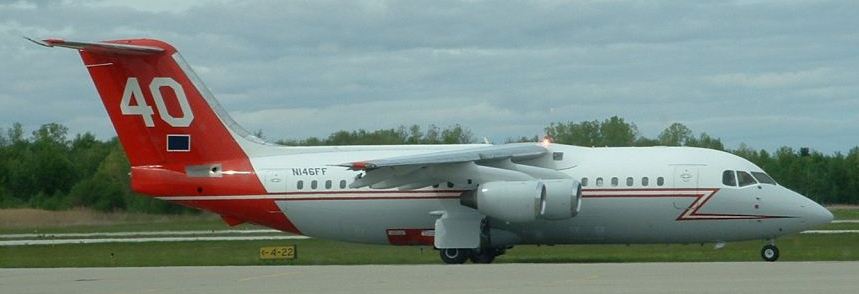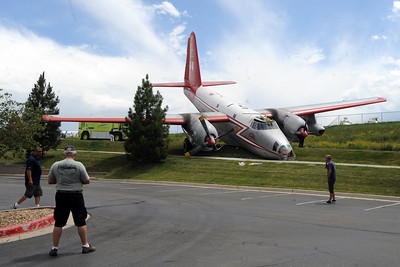Bill Moss was kind enough to take these photos and send them to us, of Neptune’s new air tanker 40 being tested at the Missoula airport today. He was not aware it was going to be tested but was able to quickly take a couple of shots. Thanks Bill!
The aircraft is a BAe-146 that was converted by Tronos from a passenger airliner into an air tanker.
After taking these he said he called Neptune to ask when the next test would occur, but they don’t want to give out that information, saying only “keep watching”.
Like we said yesterday, we are still offering a free Wildfire Today mug for the first very good photos of Tanker 40 being tested. Send your photos to bill d o t wildfiretoday a t g mail d o t c o m. If you can’t figure out that spam-defeating address, drop us a line at our Contact Us page.
Below is another photo from a different source of Tanker 40 on the tarmac at Missoula today.
Continue reading “Photos of the new jet-powered air tanker being tested”










